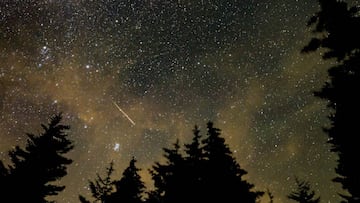SPACE
What time is best for a meteor shower in July and in which states will it look best?
The optimal time to view the Perseid meteor shower this month is in the early morning hours, between midnight and dawn but they won’t yet reach their peak.

One of the most dazzling celestial events of the year, the Perseid meteor shower, has just begun. While the Perseids are known to peak in mid-August, their activity begins as early as July, offering a breathtaking show for those willing to venture out under the night sky.
The optimal time to witness the Perseid meteor shower in July is between the hours of midnight and 5:30am. During this window, observers may be able to spot up to 50 meteors per hour streaking across the sky, provided they are in an area with clear, dark conditions.
The Perseids are known for their vibrant, fast-moving trails, making them a true delight for stargazers.
Viewing the meteor shower
States in the western, northern, and northeastern regions of the United States, such as Colorado, Utah, Wyoming, Michigan, Minnesota, Wisconsin, Maine, New Hampshire, and Vermont, are particularly well-suited for viewing the meteor shower. These areas are renowned for their dark, clear skies, which provide the perfect setting for the Perseids to shine.
How the meteors are formed
The Perseids meteor shower happens when the earth’s orbit collides with the debris from Comet Swift-Tuttle.
The comet, discovered in 1962 by Lewis Swift and Horace Parnell Tuttle, is around 16 miles wide. Comets are essentially organic snowballs that orbit the sun, and this is no different. The Swift-Tuttle is made of dust, ice, rock and organic material and it’s the biggest comet that passes the Earth annually.






